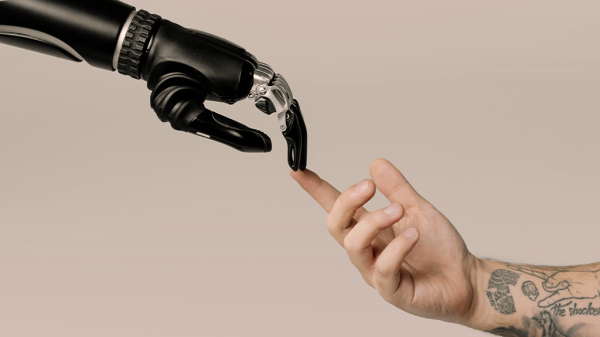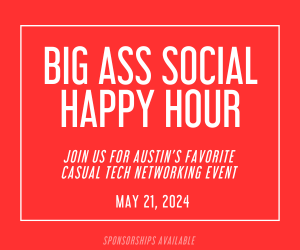I need to confess something to you
So, a little confession’s good for the soul, right? I feel like I need to confess something to you, dear reader, before we jump right into this article. What follows is an article that I pitched to our editor some months back, and was approved then, but I’ve had the hardest time getting started. It’s not writer’s block, per se; I’ve written scores of other articles here since then, so I can’t use that as an excuse.
It’s become a bit of a punch line around the office, too; I was asked if I was delaying the article about knowing the sweet spot in decision making between procrastination and desperation as some sort of hipster meta joke.
Which would be funny, were it to be true, but it’s not. I just became wrapped up in thinking about where this article was headed and didn’t put words to paper. Until now.
Analysis by paralysis
“Thinking about something—thinking and thinking and thinking—without having an answer is when you get analysis by paralysis,” said St. Louis Cardinals pitcher Matt Bowman, speaking to Fangraphs.
“That’s what happened… I was trying to figure out what I was doing wrong, or if I was doing anything wrong. I had no idea.” It happens to us all: the decisions we have to make in business loom so large over us, that we delay making them until it’s absolutely necessary.
![]()
Worse still are the times that we delay them until after such a time as when making the decision no longer matters because the opportunity or market’s already moved on. So we try to find the avenues for ourselves that will give us the answers we seek, and try to use those answers in a timely fashion. Jim Kaat, the former All-Star pitcher said it well: “If you think long, you think wrong.”
Dumpster Diving in Data
In making a decision, we’re provided an opportunity to answer three basic questions: What? So what? And now what?
The data that you use to inform your decision-making process should ideally help you answer the first two of those three questions. But where do you get it from, and how much is enough?
Like many of us, I’m a collector when it comes to decision making. The more data I get to inform my decision, and the sufficient time that I invest to analyze that data, I feel helps me make a better decision.
And while that sounds prudent, and no one would suggest the other alternative of making a decision without data or analysis would be better, it can lead to the pitfall of knowing how much is enough. When looking for data sources to inform your decision-making, it’s not necessarily quantity, but an appropriate blend between quantity and quality that will be most useful.
You don’t get brownie points for wading through a ton of data of marginal quality or from the most arcane places you can find them when you’re trying to make an informed decision. The results of your ultimate decision will speak for themselves.
“Effective people,” said Jack Welch, former CEO of General Electric, “know when to stop assessing and make a tough call, even without total information.”
Great. How do I do that?
So, by what factors should you include (and more importantly, exclude) data in your decision-making?
Your specific business sector will tell you which data sources most of your competitors use already, as well as the ones that your industry disruptors use to try to gain the edge on you.
Ideally, your data sources should be timely and meaningful to you. Using overly historical data, unless you’re needing that level of support for a trend line prediction, often falls into “That’s neat, but…” land. Also, if you’re wading into data sets that you don’t understand, find ways to either improve (and thus speed) your analysis of them, or find better data sources.
While you should be aware of outliers in the data sets, don’t become so enamored of them and the stories that they may tell that you base your decision-making process around the outlier, rather than the most likely scenarios.
And don’t fall into this trap
Another trap with data analysis is the temptation to find meaning where it may not exist. Anyone who’s been through a statistics class is familiar with the axiom correlation doesn’t imply causation. But it’s oh so tempting, isn’t it? To find those patterns where no one saw them before?
There’s nothing wrong with doing your homework and finding real connections, but relying on two data points and then creating the story of their interconnectedness in the vacuum will lead you astray.
Such artificial causations are humorous to see; Tyler Vigen’s work highlights many of them.
My personal favorite is the “correlation” between the U.S. per capita consumption of cheese and people who died after becoming entangled in their bed sheets. Funny, but unrelated.
So, as you gather information, be certain that you can support your action or non-action with recent, accurate, and relevant data, and gather enough to be thorough, but not so enamored of the details that you start to drown in the collection phase.
Trust issues
For many of us, delegation is an opportunity for growth. General Robert E. Lee had many generals under his command during the American Civil War, but none was so beloved to him as Stonewall Jackson.
Upon Jackson’s death in 1863, Lee commented that Jackson had lost his left arm, but that he, Lee, had lost his right. Part of this affection for Jackson was the ability to trust that Jackson would faithfully carry out Lee’s orders. In preparing for the Battle of Chancellorsville, Jackson approached Lee with a plan for battle:
Lee, Jackson’s boss, opened the conversation: “What do you propose to do?”
Jackson, who was well prepared for the conversation based on his scout’s reports, replied. “I propose to go right around there,” tracing the line on the map between them.
“How many troops will you take?” Lee queried.
“My whole command,” said Jackson.
“What will you leave me here with?” asked Lee.
Jackson responded with the names of the divisions he was leaving behind. Lee paused for a moment, but just a moment, before replying, “Well, go ahead.”
And after three questions in the span of less than five minutes, over 30,000 men were moved towards battle.
The takeaway is that Lee trusted Jackson implicitly. It wasn’t a blind trust that Lee had; Jackson had earned it by his preparation and execution, time after time. Lee didn’t see Jackson as perfect, either. He knew the shortcomings that he had and worked to hone his talents towards making sure those shortcomings were minimized.
Making trust pay off for you
We all deserve to have people around us in the workplace that we can develop into such a trust. When making decisions, large or small, having colleagues that you can rely on to let you know the reality of the situation, provide a valuable alternative perspective, or ask questions that let you know the idea needs more deliberation are invaluable assets.
[clickToTweet tweet=”Finding and cultivating trustworthy relationships at work is a deliberate choice. ” quote=”Finding and cultivating those relationships is a deliberate choice and one that needs considerable and constant investments in your human capital to keep.”]
Chris Oberbeck at Entrepreneur identifies five keys to making that investment in trust pay off for you: make authentic connections with those in your employ and on your team, make promises to your staff sparingly, and keep every one of them that you make, set clear expectations about behaviors, communication, and output, be vulnerable enough to say “I don’t know” and professional enough to then find the right answers, and invest your trust in your employees first, so that they feel comfortable reciprocating.
Beyond developing a relationship of trust between those who work alongside you, let’s talk about trusting yourself.
For many, the paralysis of analysis comes not from their perceived lack of data, but their lack of confidence in themselves to make the right decision. “If I choose incorrectly,” they think, “it’s possible that I might ________.” Everyone’s blank is different.
For some, it’s a fear of criticism, either due or undue. For others, it’s a fear of failure and what that may mean. Even in the face of compelling research about the power of a growth mindset, in which mistakes and shortcomings can be seen as opportunities for improvement rather than labels of failure, it’s not uncommon for many of us to have those “tapes” in our head, set to autoplay upon a miscue, that remind us that we’ve failed and how that labels us.
“Risk” isn’t just a board game
An uncomfortable fact of life is that, in business, you can do everything right, and yet still fail. All of the research can come back, the trend lines of data suggest the appropriate course of action, your team can bless the decision, and you feel comfortable with it, so action is taken! And it doesn’t work at all. A perfect example of this is the abject failure of New Coke to be accepted by the consumer in 1985.
Not only was it a failure to revive lagging sales, but public outrage was so vehement that the company was forced to backtrack and recall the product from the market. Sometimes things just don’t work out the way they’re supposed to.
You have to be comfortable with your corporate and individual levels of risk when making a decision and taking action. How much risk and how much failure costs you, both in fiscal and emotional terms, is a uniquely personal decision, suited to your circumstances and your predilections. It’s also likely a varying level, too; some decisions are more critical to success and the perceptions of success than others, and will likely cause you more pause than the small decisions we make day-to-day.
In the end, success and failure hinge on the smallest of factors at times, and the temptation is to slow down the decision making process to ensure that nothing’s left to chance.
Go too slowly, however, and you’ve become the captain of a rudderless ship, left aimlessly to float, with decisions never coming, or coming far too late to meet the needs of the market, much less be innovative. Collect the information, work with your team to figure out what it means, and answer the third question of the series (the “what”) by taking action.
#TakeAction
Roger is a Staff Writer at The American Genius and holds two Master's degrees, one in Education Leadership and another in Leadership Studies. In his spare time away from researching leadership retention and communication styles, he loves to watch baseball, especially the Red Sox!









































lia
February 7, 2017 at 8:06 am
Has anyone tried that procrastination bulldozer method to cure their chronic procrastination? I’ve heard a lot of good things about it.
Pingback: How to find the sweet spot between procrastination and desperation – The American Genius (blog) | Power Over Procrastination
Pingback: Struggle with procrastination? Check your energy, not time management